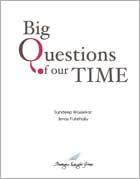The Great Rift Valley
 |
February, 2010
By Ilmas Futehally
|
In the last few months I visited a number of places along the Great Rift Valley- the geographical system of faults and valleys that stretches from Lebanon in the North to Mozambique in the South across almost 5000km crossing over 20 national borders.
The Great Rift Valley has been the cradle of civilization- with the Leakey family of anthropologists having found the fossils of several of our hominid ancestors in its East African part. Some of the hominid bones found here date back to over 3 million years. This region also provides evidence of man�€™s transition from hunting to farming, and the beginnings of language and writing. It contains the origins of three major religions- Judaism, Christianity and Islam.
The Great Rift Valley has been listed amongst the World Heritage Sites, because of its anthropologic significance, enormous diversity of landforms, lake systems, hot springs and other unique water bodies, such as the Dead Sea in Jordan and Lake Nakuru in Kenya. It contains mountains and active volcanoes with a high degree of seismic activity. The Rift Valley is particularly high in biodiversity, and serves as a migratory route as well as wintering grounds for birds between Europe, Asia and Africa.
Standing on the shores of the Dead Sea in Jordan in December 2009 I tried to think of the common feature that binds the countries of the Great Rift Valley together. The whole region has been suffering from drought for the last 4 years- and the image that kept returning to me was the grey dusty landscape I had seen in Kenya in August 2009. Perhaps it is the lack of water, and vulnerability to droughts rather than the presence of the lakes that is the common feature of the countries in the Rift Valley today.
The situation in Kenya has become much worse in the last few months. The Long Rains expected in November 2009 have failed, and over 3.8 million Kenyans require food aid. Malnutrition is rampant with over 20% of the children being severely underweight. Cattle, considered to be the wealth of many tribes are dying by the thousands- experts estimate that 500,000 cattle have died so far. Some herders have reportedly lost 70% of their cattle and are willing to sell their animals at $4, or 2% of the normal price. I dread to even think of the state of the lions, leopards, elephants, zebras and giraffe that I saw just a few months ago.
The countries in the Great Rift Valley are expected to be the ones that will be the most affected by climate change in the coming decades. Historical climate records in Mozambique already show a warming of 1.1-1.6 degrees Celsius over the past 40 years. From 2040 to 2060, maximum temperatures are expected to increase by almost 3 degrees Celsius in the interiors. This will lead to more unpredictable rains, droughts, floods and uncontrolled fires.
Water is already a highly politicized issue in many parts of the Rift Valley, especially in Jordan and the Palestinian Territories which are among the most water stressed regions in the world. With the increasing impact of climate change, it is difficult to imagine what the conditions would be like. Tensions between Israel and Palestine, Israel and Jordan, Jordan and Syria are an integral part of the conflict in the region.
Thus, unless urgent steps are taken to address the issues of water and climate change in the Great Rift Valley, the very region that fostered the beginnings of civilization could turn into the region where the end of civilizations begin. And we are talking not just about human beings but also other species that share our world.
Related Publications
-
.jpg&maxw=50)
Big Questions of Our time: The World Speaks, 2016
Download:Big Questions of Our time: The World Speaks _Full Report
-

-

Second Freedom South Asian Challenge 2005-2025, 2005
read more
Download:Second Freedom South Asian Challenge 2005-2025 Full Report
Related latest News
Related Conferences Reports
-

Global Challenges Conference, October 2016
Download:Global Challenges Conference Report
-

Conference on Responsibility to the Future: Business, Peace and Sustainability, June, 2008
Download:Global Security and Economy: Emerging Issues


